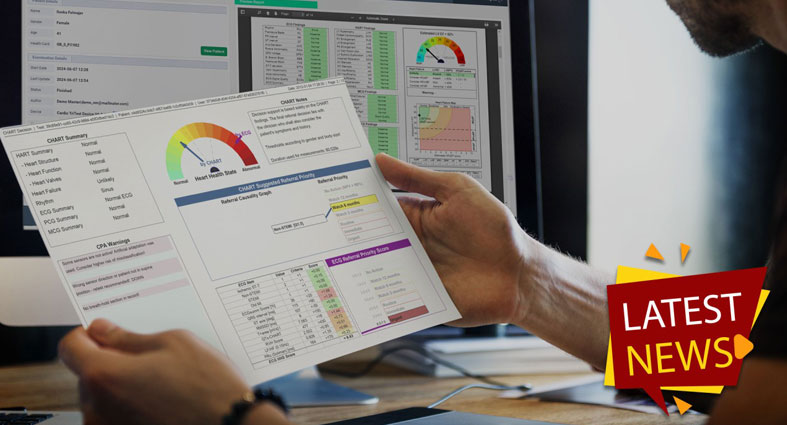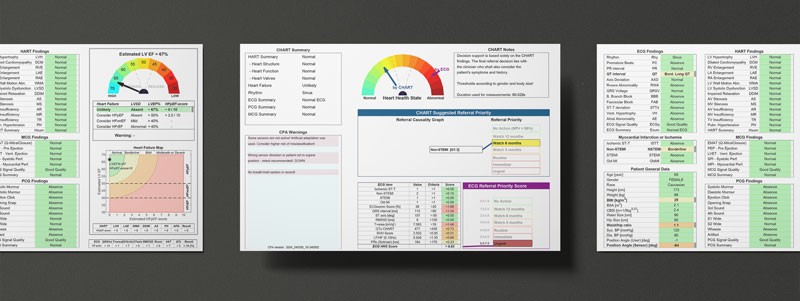
Major Updates in Cardio-HART: Enhancing Precision and User Experience
June 25, 2024
The latest updates to Cardio-HART, in particular the CE Certified CHART Processing Algorithm (CPA) bring several improvements designed to enhance diagnostic accuracy, user experience, and report clarity. Here's a look at the most important changes:
1. Enhanced Rhythm Reporting
One of the most notable improvements is in the rhythm reporting for ECG interpretations. Its rhythms algorithms have been refined allowing for more accurate rhythm classification, especially for atrial flutter and including more rare rhythms classes. When the system cannot make a definitive diagnosis, it will instead label the result as inconclusive, classifying it as "other rhythm" and provide additional notes and warnings to help guide healthcare providers. This because rare rhythms can be very similar to all but the most highly trained eye and by highlighting it allows for a sober second look. This change helps prevent misinterpretation, ensuring better patient outcomes.

2. More Accurate ECG Measurements
Cardio-HART now calculates and reports the clinically preferred R'/R ratio instead of the R/R' ratio. This change is crucial for diagnosing conditions like bundle branch blocks more accurately. The updated system helps avoid confusion and ensures that healthcare providers receive the most relevant and standard metrics for making informed decisions.
3. Improved Sensor Support
Cardio-HART has expanded its support for various sensor combinations, including scenarios with less than four sensors. This flexibility is particularly beneficial in clinical situations where a full four sensor setup is impractical. The system can now intelligently adapt by using available signals and clearly indicates when such adaptations have been made, maintaining transparency and reliability in the reports.
4. Streamlined Report Generation
The report generation process has been optimized for better readability and understand-ability:
· Font Size Adjustment: The header font size has been reduced slightly to prevent text overlap when displaying long IDs.
· Consistent Annotations: Color annotations in ECG graphs are now standardized across all report pages, enhancing visual consistency.
· Conditional Pages: The record comparison page will only appear if multiple records are available, making reports more concise and relevant.
5. Reduced File Size
The size of CHART PDF reports has been significantly reduced, from 8MB to 3-4MB. This optimization accelerates the downloading, sharing, and emailing processes, making it easier for healthcare providers to access and distribute reports.
6. Listing ICD-10 Codes
To further aid in diagnosis and treatment planning, CHART Reports now include ICD-10 codes for the diagnosed conditions. This inclusion aligns CHART reports with standard medical coding practices, facilitating better communication and record-keeping.
7. Enhanced Body Position Reporting
The system now accounts for and reports the patient's body position during intervention recordings. It compares user-selected positions with those by its sensors, providing warnings if discrepancies are found. This feature ensures that the body position is accurately reflected, which is critical to diagnostic interpretations accuracy for certain diagnostic procedures.
Conclusion
These updates mark a significant step forward for the Cardio-HART system, enhancing its diagnostic capabilities and making it more user-friendly. By improving rhythm reporting, supporting various sensor configurations, optimizing report generation, and including essential clinical codes, Cardio-HART continues to evolve as the foremost cardiac clinical diagnostic tool for use in point-of-care settings. These changes ensure that healthcare providers can rely on Cardio-HART for precise, clear, and relevant insights into their patient's cardiac status and heart health.
